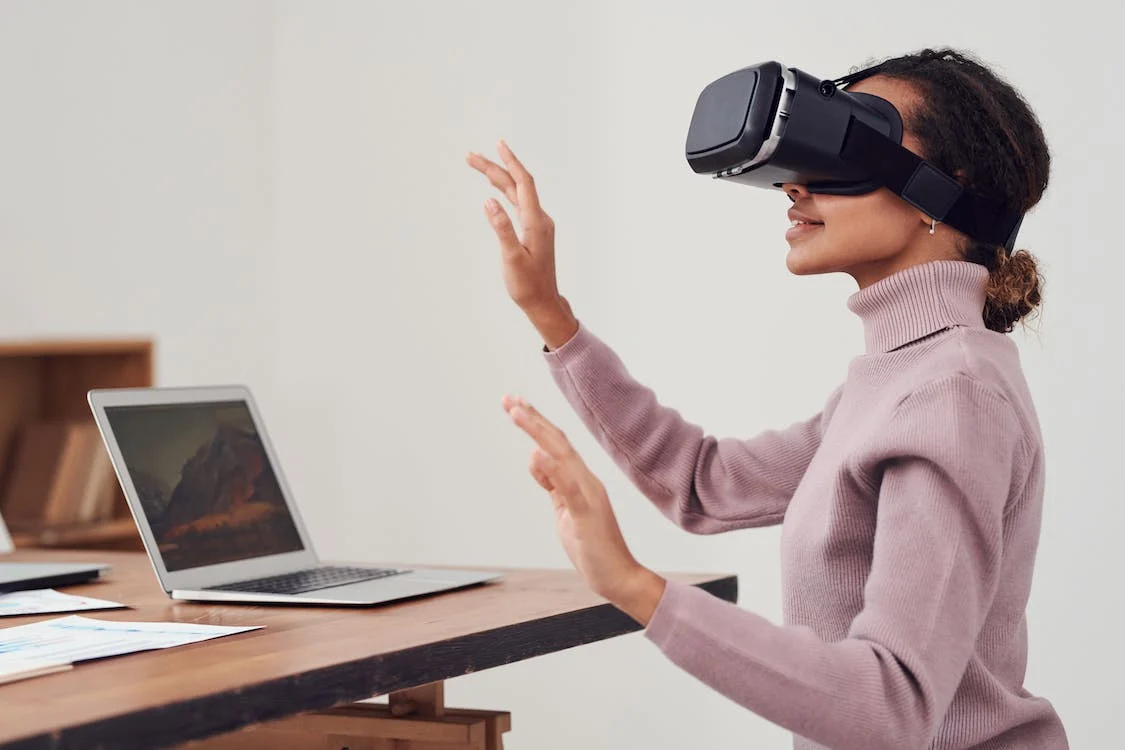What are Virtual Reality and Augmented Reality?
Virtual reality and augmented reality are technologies that have been around for a long time now. These two have often been complementary to one another. Virtual reality (VR) immerses people in experiences, replacing their vision with a computer-generated simulation of an environment. On the other hand, augmented reality (AR) adds digital elements to a computer’s live view using a camera.
Virtual reality headsets were not so popular when they were released in the market. Soon the scenario changed when a company named Oculus announced the first-ever 90-degree vision VR headsets. This revolutionized the industry of virtual reality, and many companies joined the market. Innovations in the technology, bringing us a more immersive VR experience. The use of virtual reality is often seen in entertainment applications such as video games, 3D cinema, and virtual social worlds.
Augmented reality technologies are usually incorporated into other technologies to make them interactive. The technology has a broader range of applications than virtual reality. Augmented reality is now used in entertainment, medicine, education, and business. We all remember a time when Pokémon Go was the talk of most news channels. This is a classic example of the use of augmented reality. Authors from “do my thesis” service think AR is a great learning instrument too.
Escaping the Pandemic Reality
With the world being plunged into a pandemic, most of us have been forced to stay home. Our reality became limited to what we saw at home and on our TV screens. Companies were also drastically affected by the pandemic. They had to come up with ways to move work into an online setting. Meetings began taking place on Zoom calls, education shifted to Google Classroom, and even our favorite escape room concept had to adopt online technologies.
While we have had to adapt to the change in our daily activities, work and businesses are still required to continue. Working from home (WFH) is the term on everyone’s mind now. The use of VR and AR has also been adapted to suit the new norm. Virtual environments have been set up to mimic what we would have normally had if things were not how they are. Clients could get an immersive experience of a product by using VR and AR renderings. Travel, retail, and education industries can use these technologies to simulate the actual physical environments. Even entertainment companies such as escape rooms have started earning significant profits from the use of VR and AR by immersing and engaging players in the experience.
Even though we have been physically disconnected from each other, we still try to remain connected through every possible means. Popular social media apps like Facebook, Instagram, and Snapchat have incorporated features that will improve the ways we communicate with each other. We now have AR integrated into these apps that give us fun filters and effects to experiment with. AR games have also been added to video calls offering a fun and exciting way to stay connected.
Social media apps were not the only ones to implement AR and VR technologies. Even meeting apps like Zoom enabled customizing meeting backgrounds and added face filters to make the meetings fun. We have been familiar with a few mishaps some people faced during their work meetings. Their rather funny demises were some of the few occasions we got a little laugh during the pandemic. Companies could also make use of online escape rooms to organize team-building activities for their employees. Now, we do not have to look for the best escape rooms near me as we can effortlessly partake in exciting escape challenges from the comfort of our homes! After all, it’s never fun to be work-oriented without socializing with our colleagues.
Conclusion
The pandemic has changed the way we do most things. We find certain measures in our new reality are most likely to become the norm after the pandemic. Technologies like VR and AR, which helped implement these changes, will become embraced in most industries. Adapting to and adopting these technologies will give an upper hand in the post-pandemic era to those willing to embrace them.

